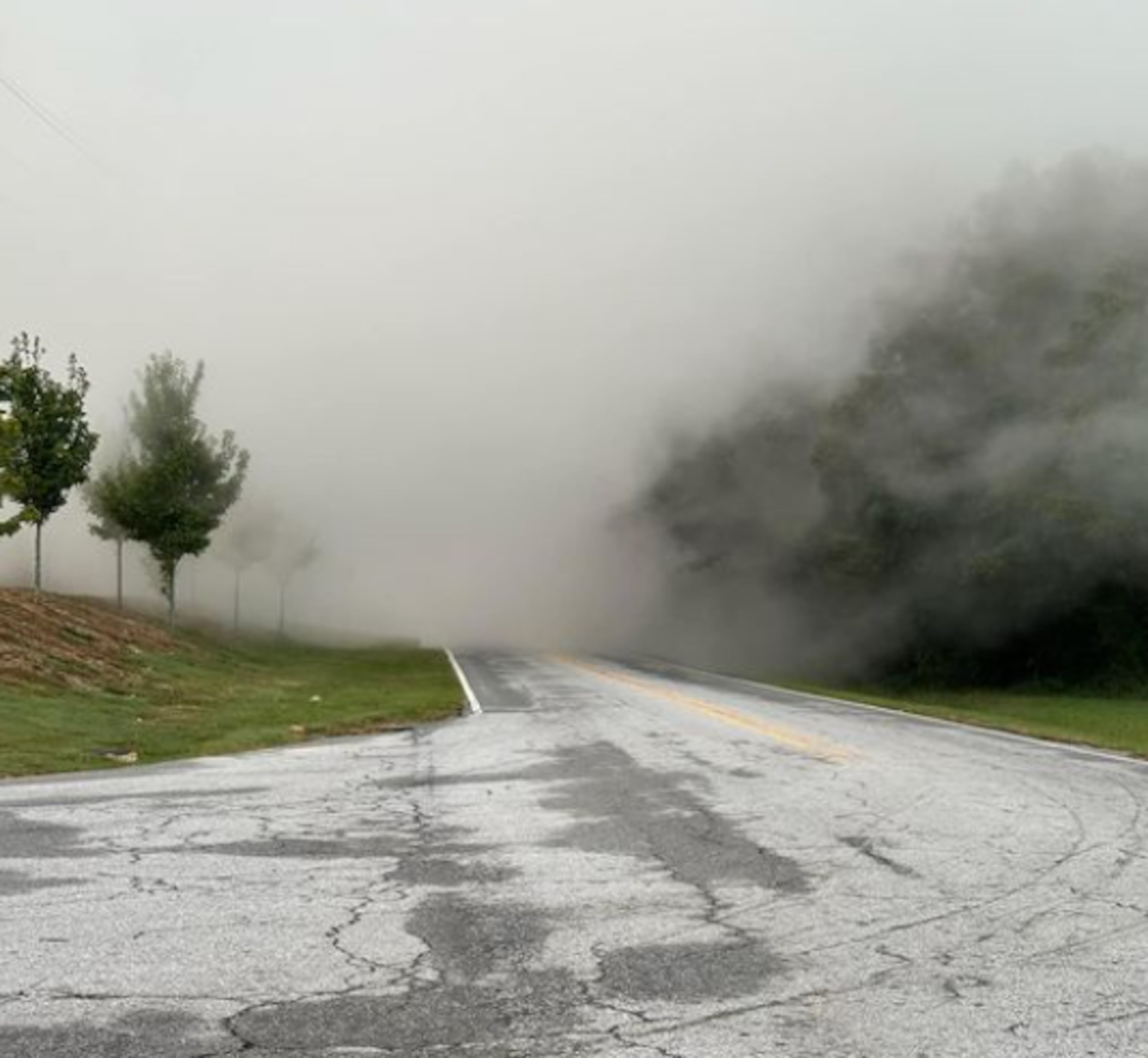Experts say health effects from BioLab fire, chemical release hard to estimate

Environmental health experts say they can’t immediately gauge the extent of health hazards from the plume of smoke spewing from a chemical plant in Conyers, but Monday they recommended people take precautions — such as staying indoors — to limit exposure.
Jeremy Sarnat, an associate professor of environmental health at Emory University’s Rollins School of Public Health and part of a scientific committee that advises the U.S. Environmental Protection Agency, said it’s not clear exactly which chemical compounds were being released from the BioLab chemical facility or their concentration levels, both of which make a great difference in health impacts. But the plume was drifting miles from the facility, with metro Atlanta residents living several miles away complaining of eye and throat irritation.
Sunday’s fire at BioLab, a chemical facility on Old Covington Road in Conyers, led to the evacuation order of about 17,000 people and several road closures, including I-20. The interstate had reopened by Monday morning, but several roads remain closed, and the plume of smoke — now a chemical reaction and not a fire — could remain visible for several days, officials say.
BioLab makes pool and spa treatment products. It was not immediately clear what toxins or pollutants were released from the plant.
After the blaze erupted Sunday, Rockdale County said in a news release that tests by both the EPA and EPD detected the presence of chlorine in the air.
Rockdale County officials advised residents to keep windows and doors shut, and to turn off air conditioning.
In a Monday message to local health departments in metro Atlanta, the Georgia Department of Public Health noted that the wind was pushing smoke into areas beyond the immediate area of the fire and also said, “At this time, no significant toxicity has been identified in the smoke.”
“I’m on the Emory campus right now, and I smell it and I see it,” said Sarnat, who was in his office at the Atlanta campus Monday. “So it was a very, very potent chemical release, but it’s not something I am going to panic about. I’ll take precautions (like staying inside) where I can.”
State health officials stressed that it’s important to limit exposure to the chemicals and get medical attention if symptoms worsen or if a person has trouble breathing.
The Centers for Disease Control and Prevention didn’t answer questions about the possible health impacts from the chemical release; instead, a spokesperson said it would refer questions to the Georgia Emergency Management Agency, who is leading the emergency response.
On its informational webpage, the CDC notes that exposure to chlorine can cause burning of the eyes, nose and throat. It also can lead to headaches, nausea and choking.
At low concentrations, almost all of the chlorine is removed from the air in the upper part of the respiratory airways and only a small amount may reach your lungs, the CDC says. But more severe injury can take place if people are exposed at highly concentrated levels. For example, a short exposure to chlorine in the air at one to three parts per million could lead to mild nose irritation. At five to 15 parts per million, throat irritation could arise. An exposure of 40 to 60 parts per million could result in lung injury.
Sarnat said most people’s exposure from this incident would likely be low and under five parts per million, unless a person was in the direct plume release.
In a public safety alert text Monday afternoon, GEMA Homeland Security said EPA was monitoring air quality for chlorine and related compounds, and that “chemical levels are unlikely to cause harm to most people.”
Several people responded to the announcement asking, “Who are most people?”
Monday, the EPA said it was testing for chlorine and hydrochloric acid, while other county emergency services and fire departments around the metro area said they were testing for a range of hazardous air pollutants. So far, none had detected concentrations that would pose safety concerns to the general public.
Georgia Tech professor Sally Ng, part of an effort to provide real-time air quality measurements, detected a major spike in the amount of chlorine particles in the air in Decatur, between the Conyers fire and downtown Atlanta. At 9 a.m. Monday, the system known as the Atmospheric Science and Chemistry Measurement Network documented a 1,400-times increase in the amount of chlorine-containing particles in the air, and a 170-times increase in the amount of bromine-containing particles in the air. Bromine exposure also can be toxic.
Typically, there is little of either element in the air, she said.
Sarnat said the health effects from an exposure to the chemicals at BioLab will be strongly influenced by the amount of the chemicals a person inhales and their individual health status. He said those with underlying health conditions such as asthma and chronic obstructive pulmonary disease should be especially careful to avoid exposure and pay attention to symptoms.
Sarnat also said the level of pollution may not be so serious and that it’s important to keep things in perspective. While the level of chemicals in the air are “fairly high” for Atlanta, he said these levels of concentrations are typical for many parts of the world on a daily basis.
Sarnat said there’s little protection to be had from wearing a mask like those worn to prevent the spread of coronavirus. The gas molecules and particles that may form from reactions with the gases are small and easily would penetrate those masks, he said.
There are heavy duty respirators that would work, but these are cumbersome and typically used in occupational exposure settings, not by the general public.
“I bring this up to say there are things we can do to reduce exposure and potential risk, but we shouldn’t go completely crazy,” he said.
Christina Fuller, an associate professor and environmental health expert at the University of Georgia, agreed with Sarnat, and urged people to err on the side of caution.
“There’s definitely not a problem with taking more precautions than you think you might need,” said Fuller. “And not just today, maybe even tomorrow too. Like being inside and when you are in your car too. Keep the windows up and recirculate the air with your AC.”







